- Menu
- Search For Product Models
Search For Product Models
- cn
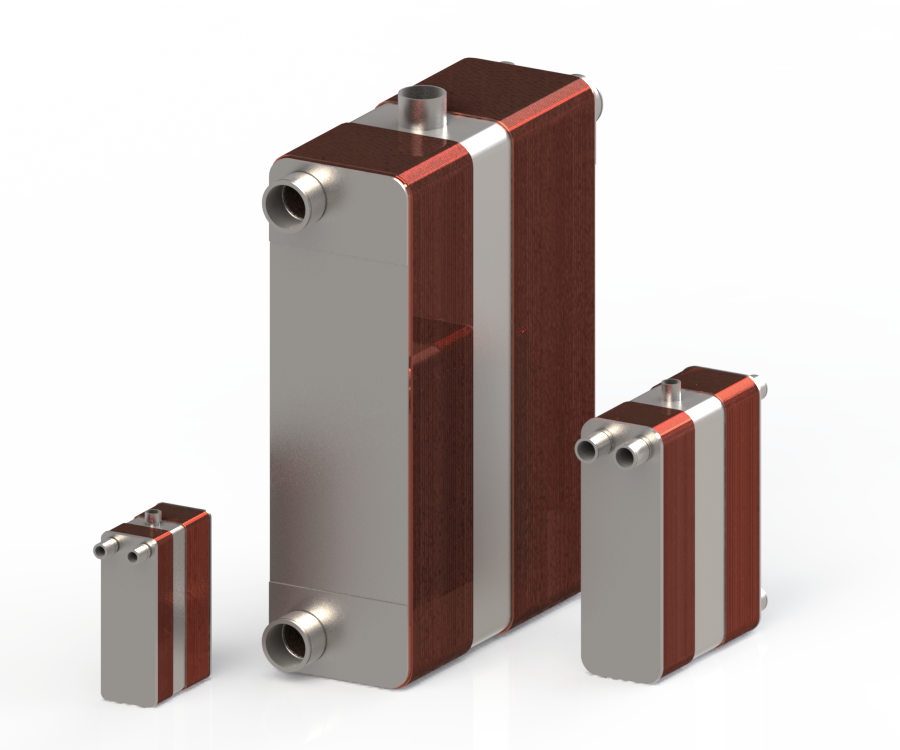

Warm, humid compressed air enters the system.
The air first passes through an integrated air-to-air heat exchanger, where it is pre-cooled by the outgoing cold dry air, improving overall energy efficiency.
The pre-cooled air then enters the refrigerant-to-air section, where it is rapidly chilled by a circulating refriger- ant. This reduces the air temperature below its dew point, causing moisture to condense.
The condensed water is separated from the airflow in a moisture separator or integrated trap and is discharged via a drainage system, ensuring only dry air continues downstream.
The dry, cold air passes again through the air-to-air heat exchanger, where it is reheated by the incoming warm air. This raises the outlet air temperature and improves dew point stability.
The dry and reheated air exits the system, ready for use in pneumatic tools, industrial processes, or clean air environments.

Material Specification

Max Working Pressure
• Air Side: 16 bar (g) @ 20°CModel |
A |
B |
C |
D |
E |
AL14 |
76 |
206 |
42 |
172 |
44 |
AL26 |
111 |
310 |
50 |
250 |
50-100 |
AL95 |
191 |
616 |
92 |
519 |
85-276 |
Operating Conditions Air Side:
Operating Pressure: 7 bar (g)
Inlet Temperature (Ta): 35°C
Outlet Temperature (Tv): 27°C
Pressure Drop (ΔP): 20 kPa
Refrigerant Side:
Refrigerant Type: R134a
Evaporation Temperature (Te): 0°C
Superheat (SH): 5 K
Dew Point Temperature (Tev): 3°C
Separator Efficiency
Droplet Size: 95% separation efficiency for standard water droplets
Mounting
Type: Stud-bolt mounting available
Note : Dew Point Definition
“Dew point” is the temperature at which water vapor in the air starts to condense in the separator. It is normally maintained slightly above the freezing point of water, around 2–5°C (35–40°F).

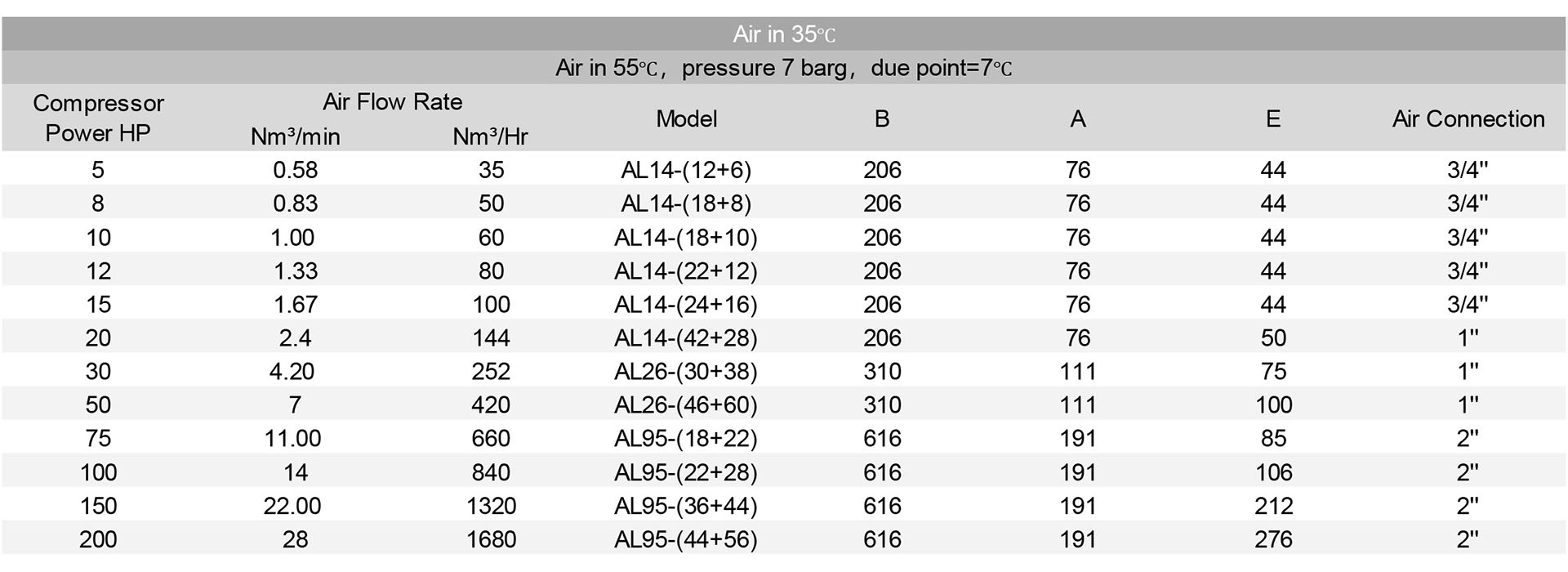
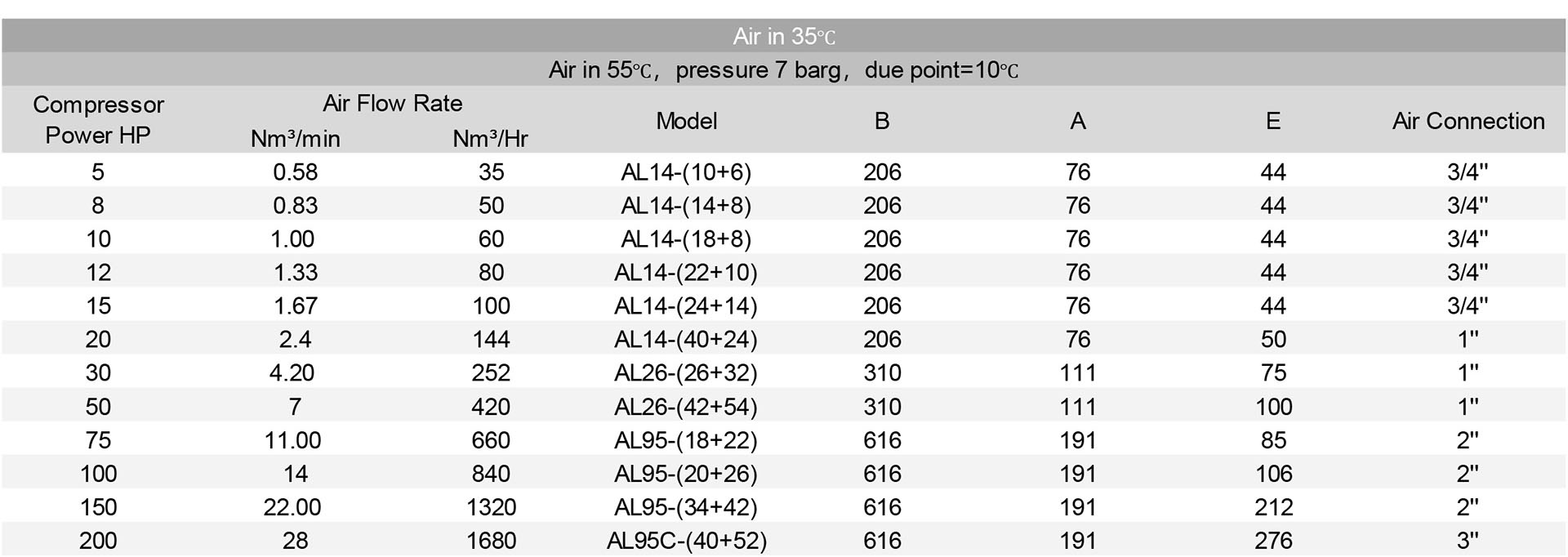
"Dew point" is the temperature at which the water vapor in the air starts to condense in the water separator.
This is normally maintained slightly above the freezing point of water, 2-5 °C (35-40 °F).
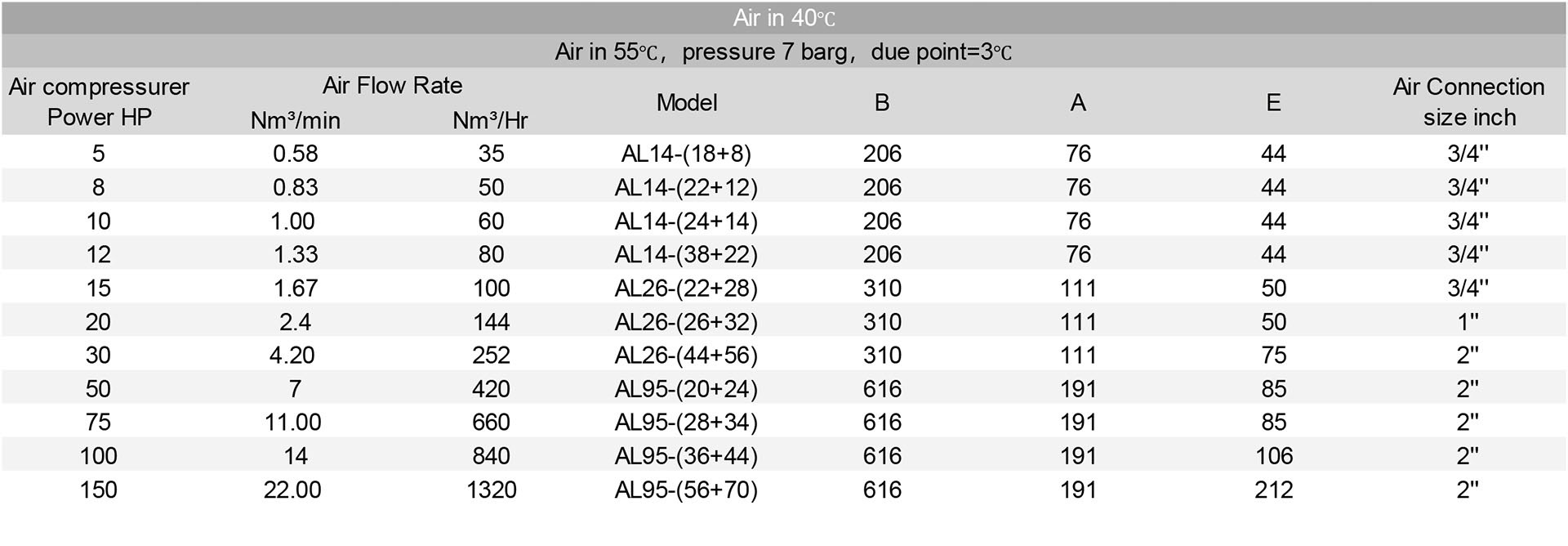
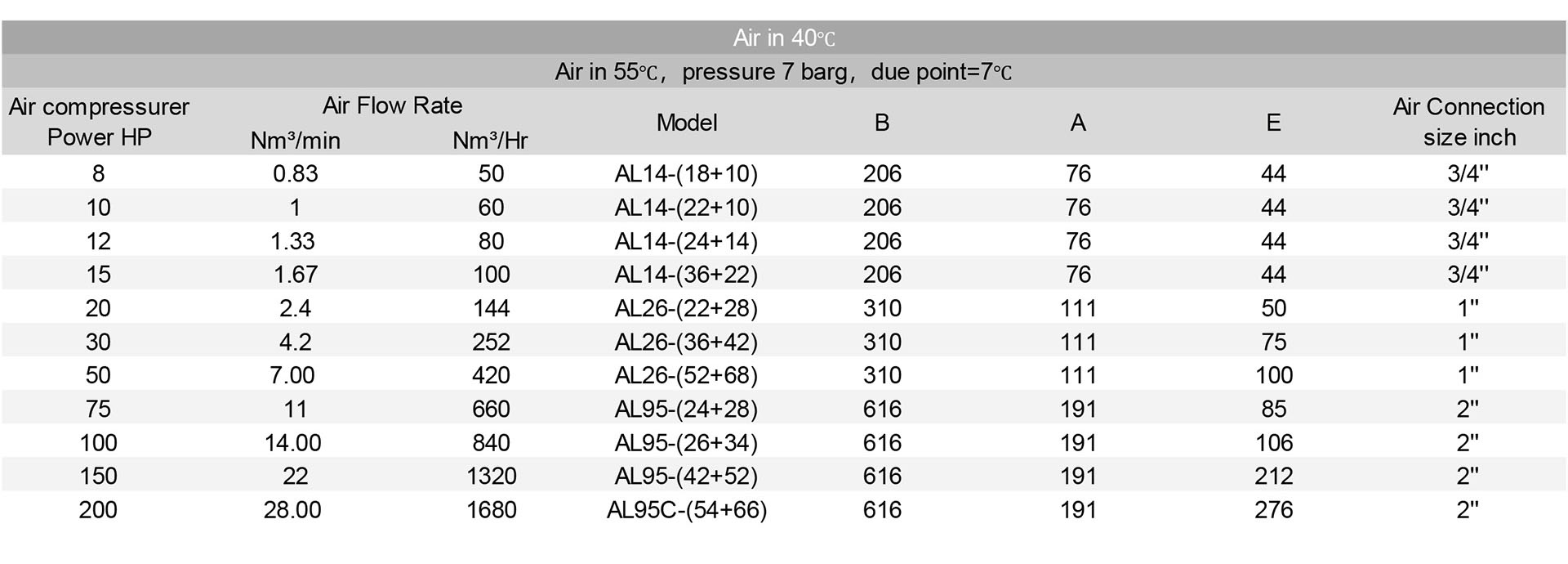

"Dew point" is the temperature at which the water vapor in the air starts to condense in the water separator.
This is normally maintained slightly above the freezing point of water, 2-5 °C (35-40 °F).
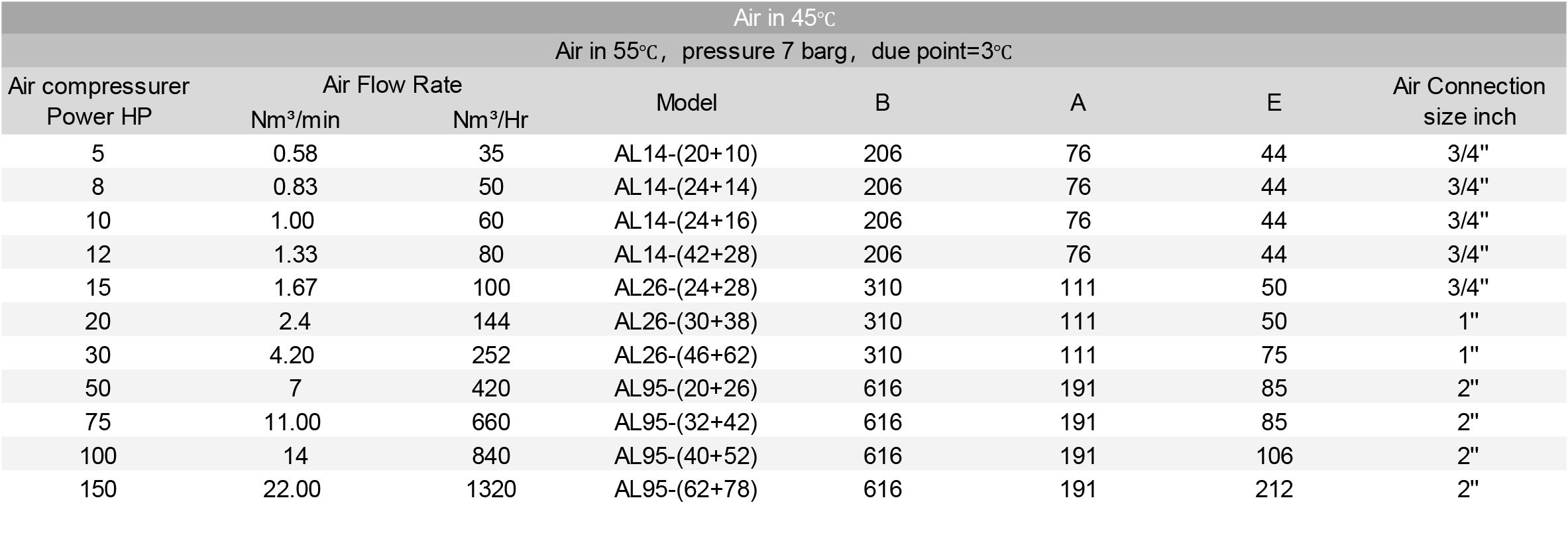

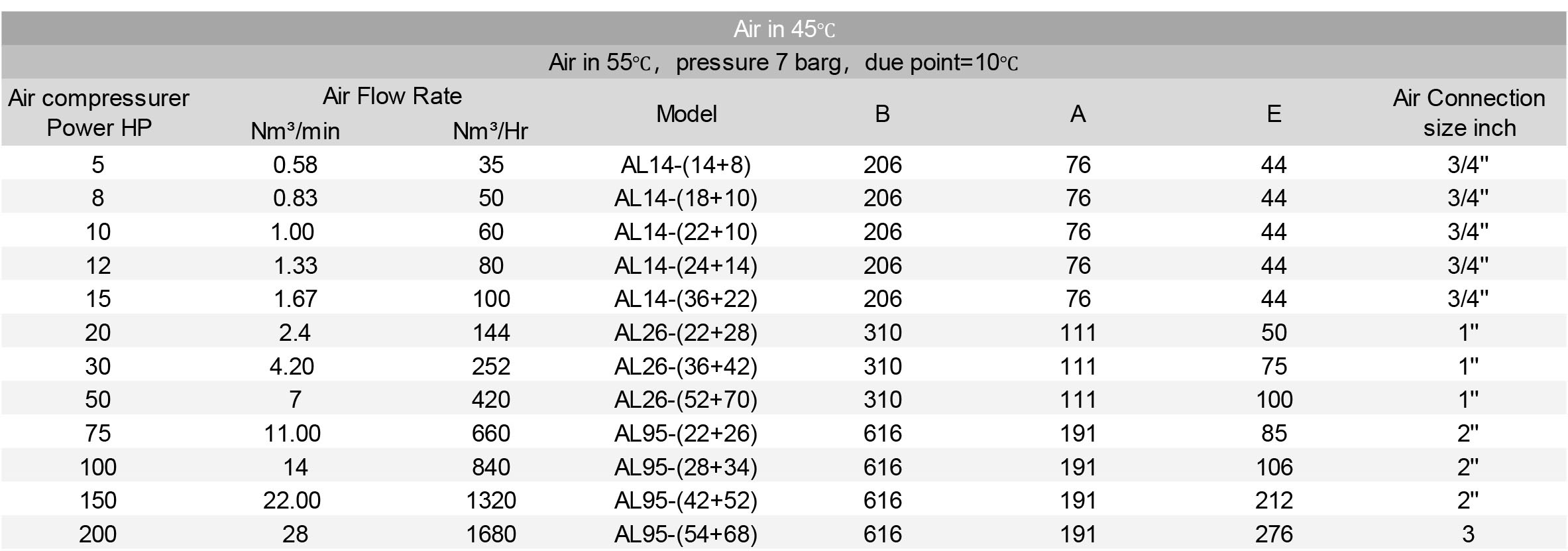
"Dew point" is the temperature at which the water vapor in the air starts to condense in the water separator.
This is normally maintained slightly above the freezing point of water, 2-5 °C (35-40 °F).